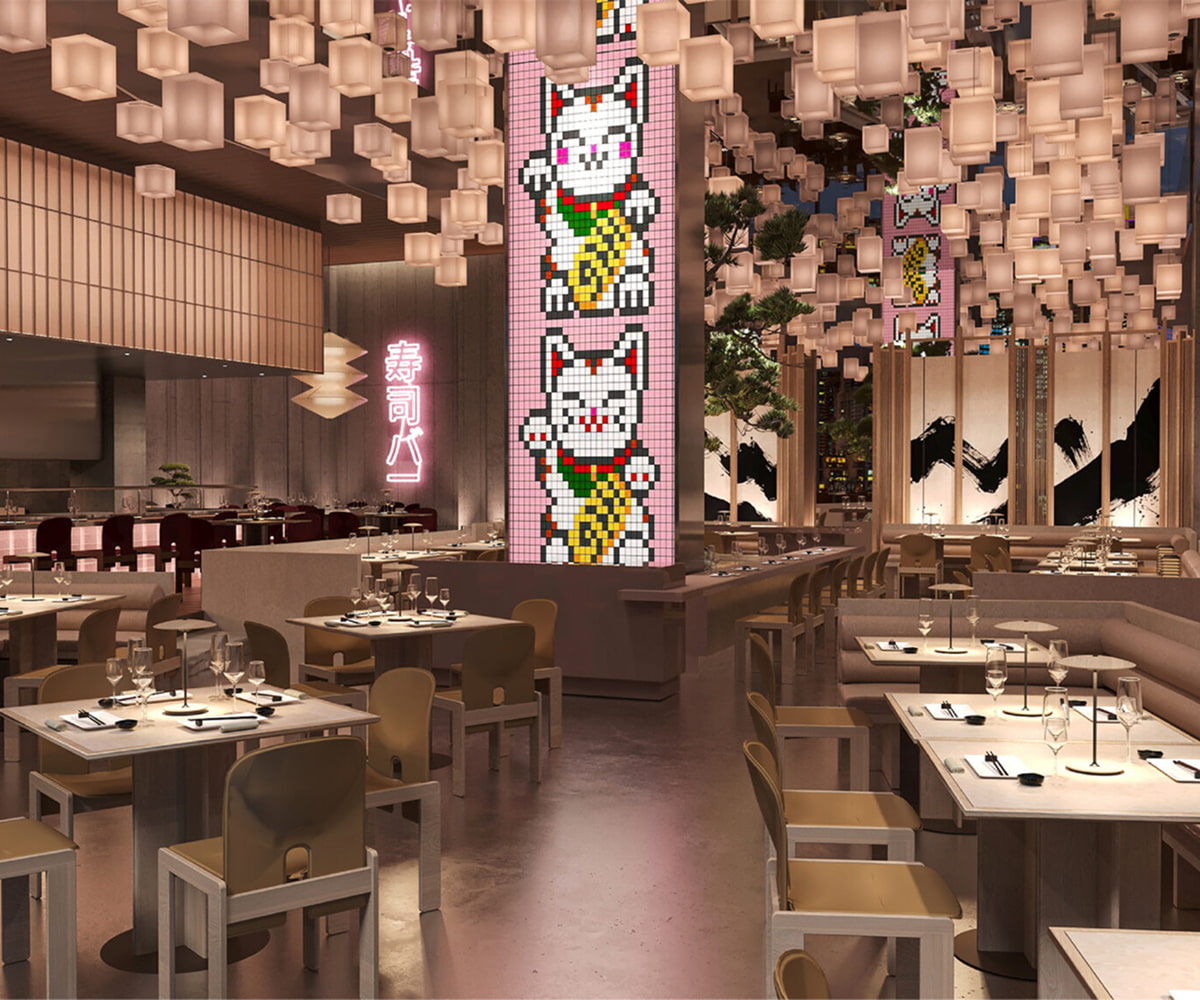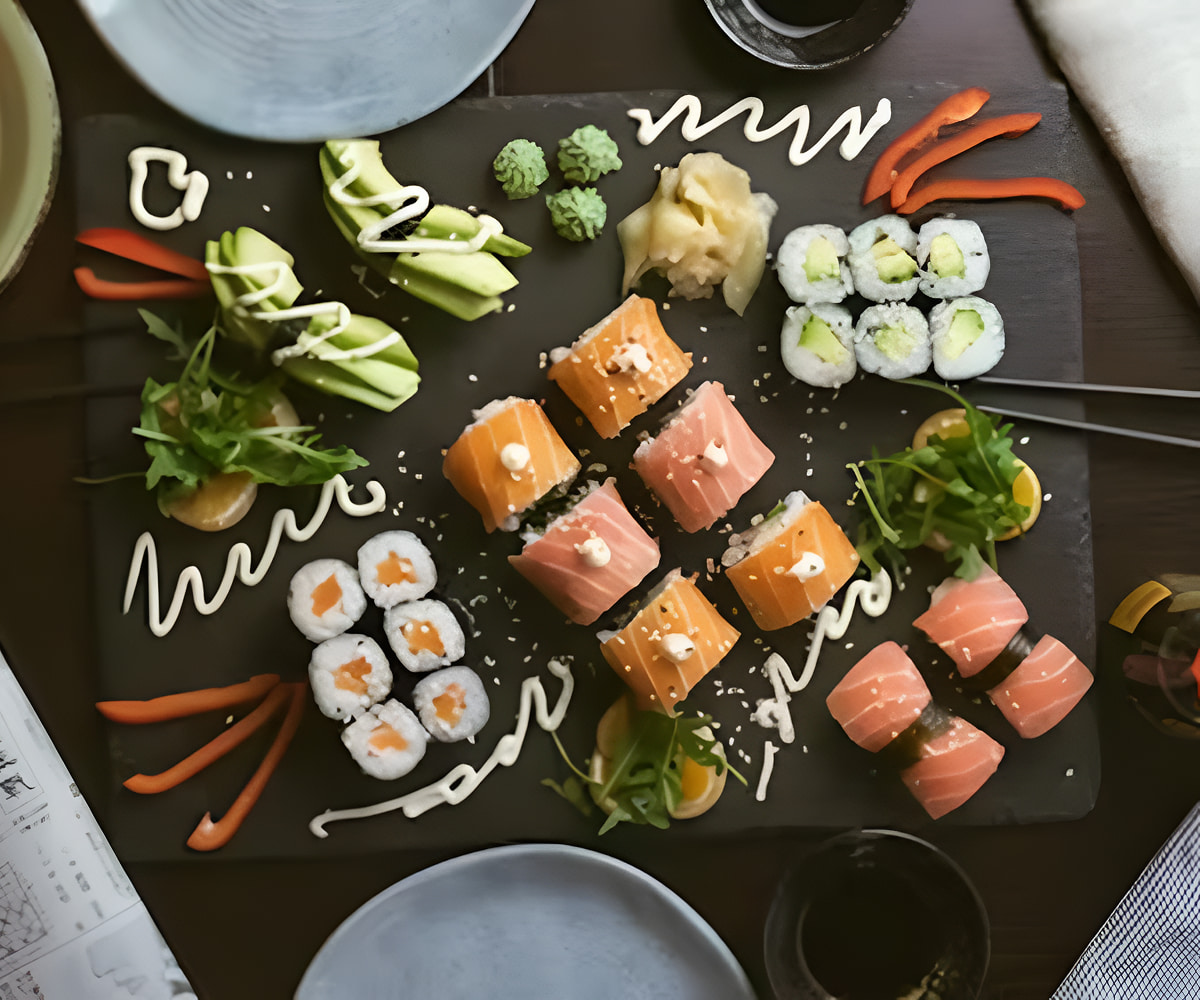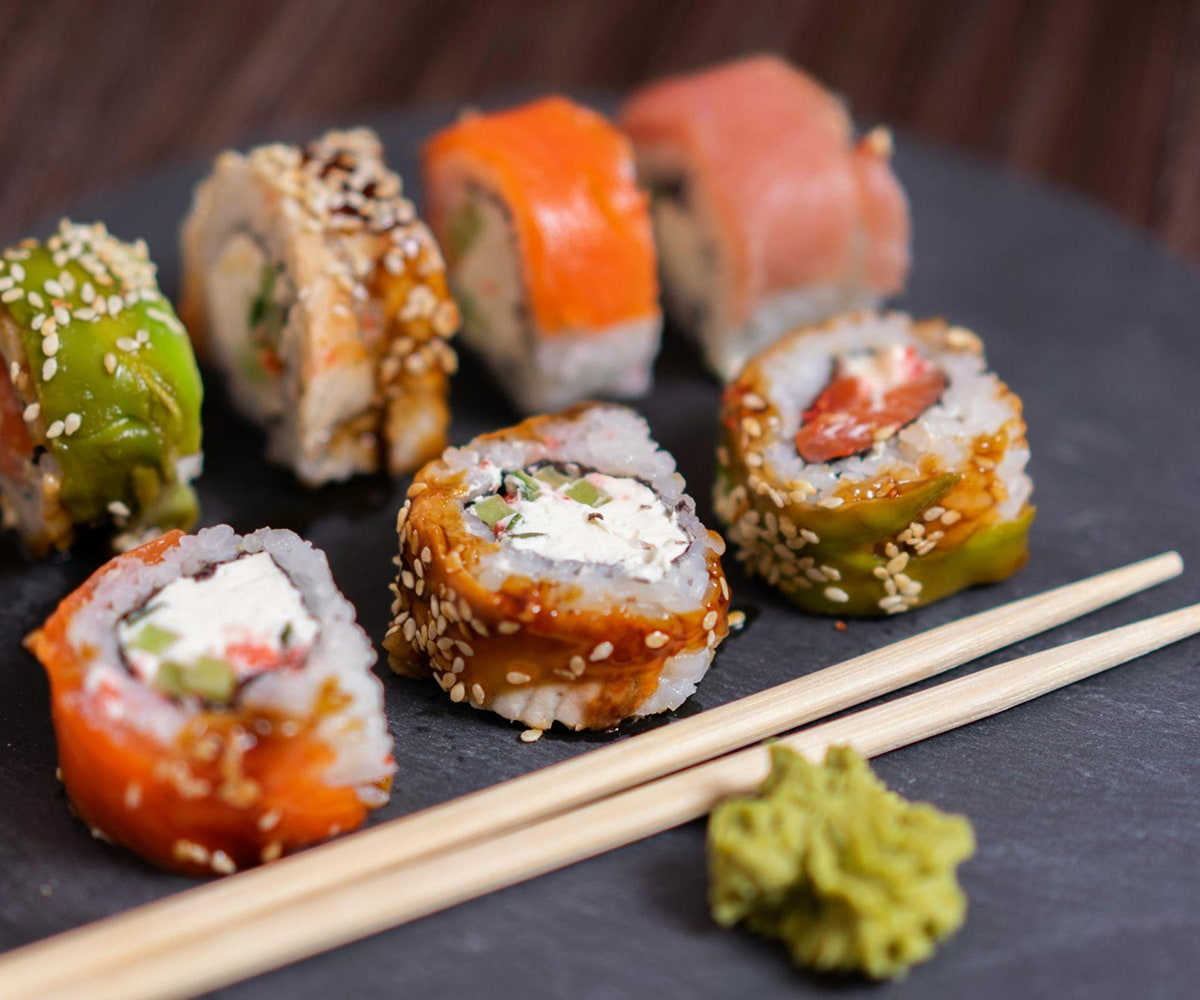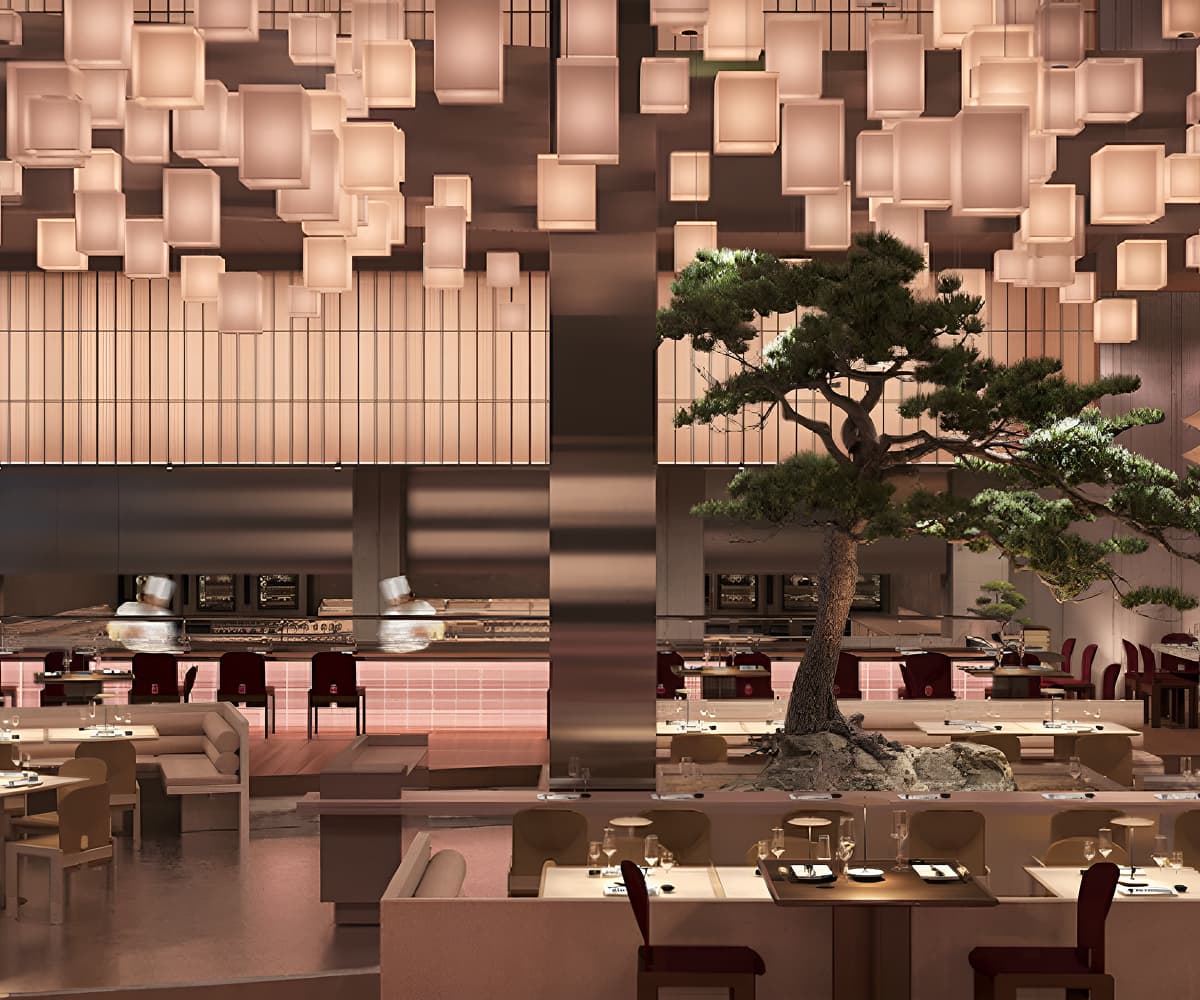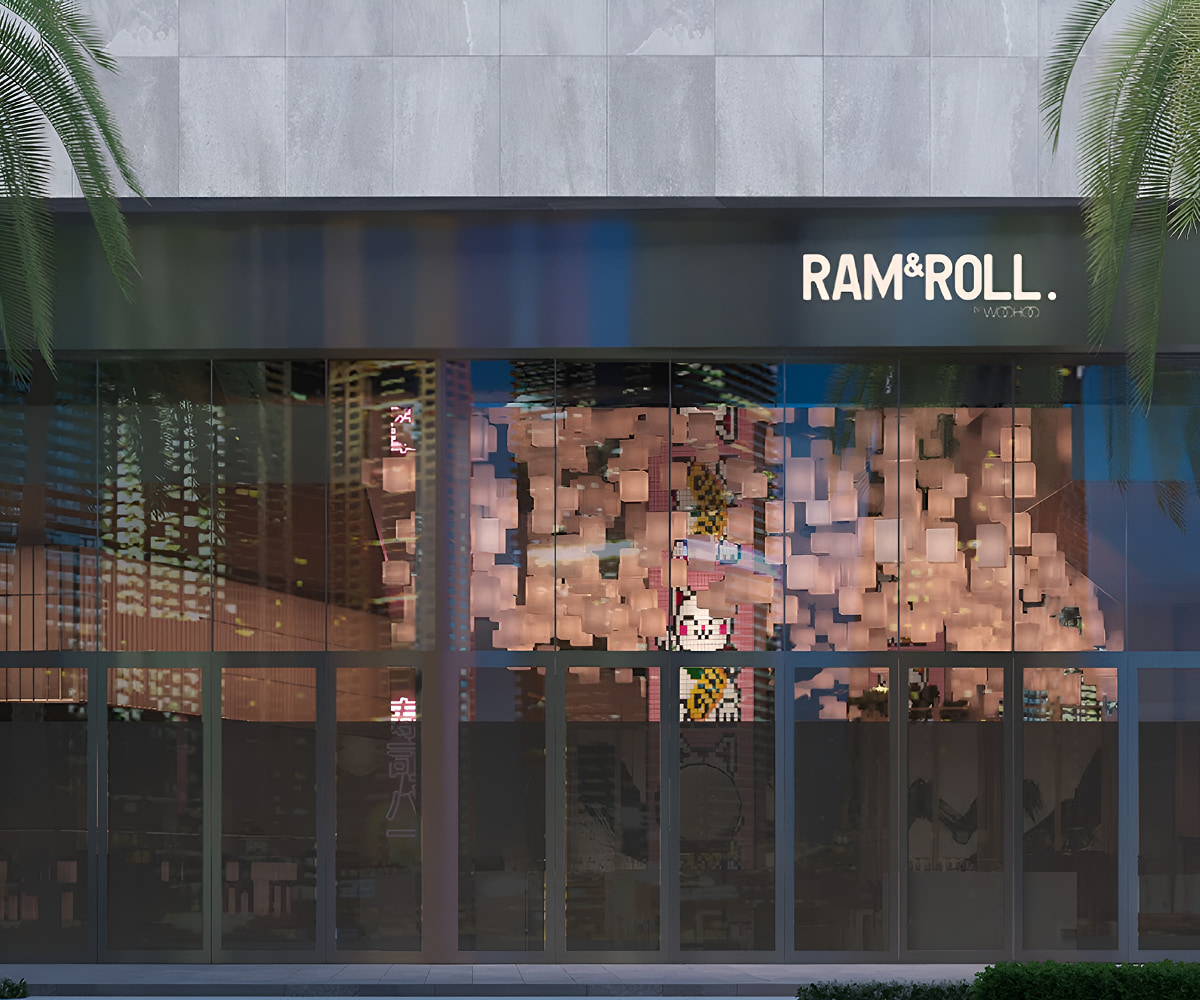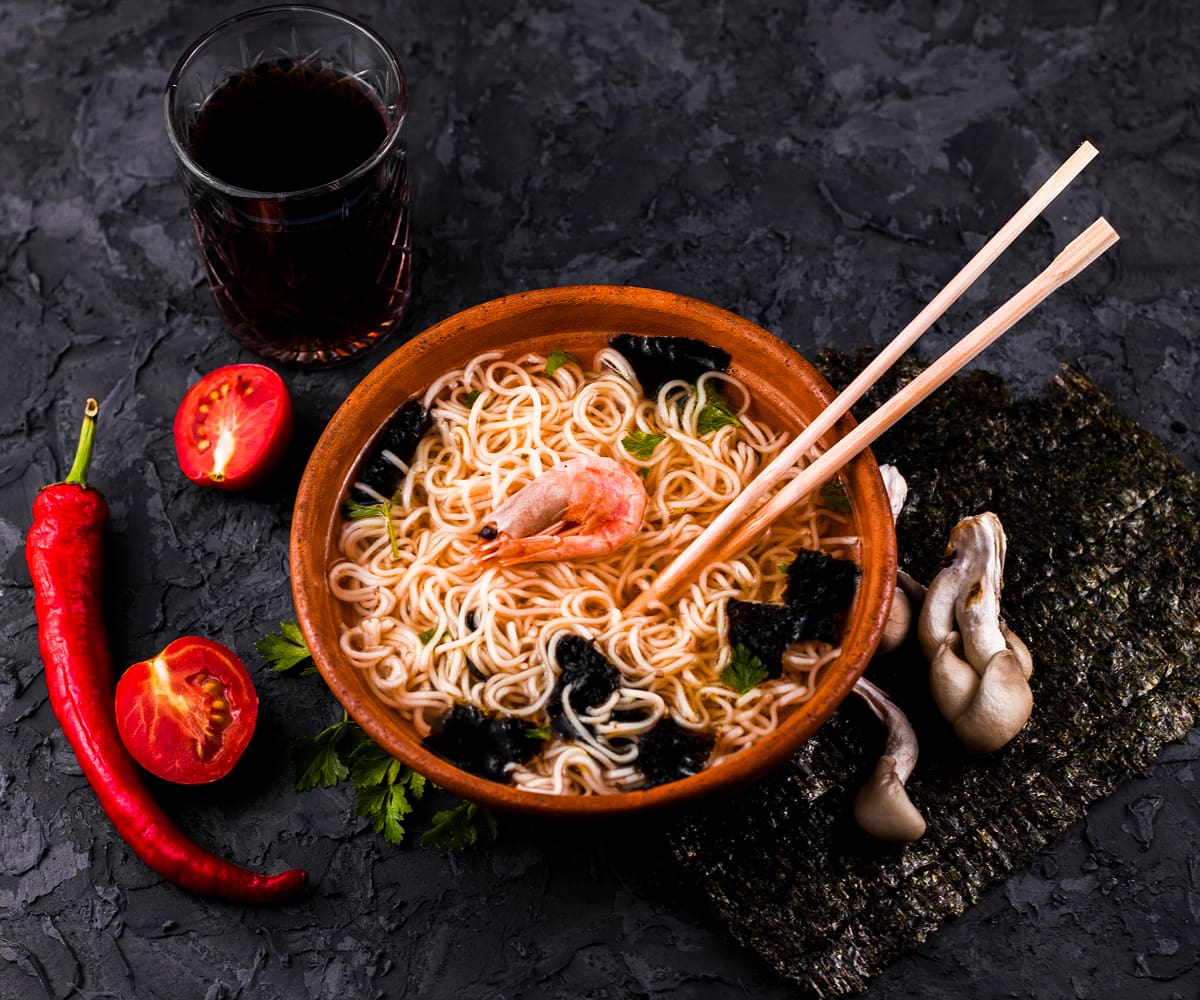Discover sushi knife mastery at Ram & Roll in Kempinski The Boulevard, Dubai—learn how yanagiba, usuba, and deba blades shape perfect cuts, authentic sushi, and refined Japanese dining.
At Ram & Roll at Kempinski The Boulevard in Dubai, precision is a quiet promise. As we prepare for our grand opening, our culinary team is refining the art of sushi knife work—the invisible craft that transforms pristine fish, crisp vegetables, and perfectly seasoned rice into elegant, balanced bites. This guide explores how specialized Japanese blades like the yanagiba, usuba, and deba shape every clean cut, why technique matters for flavor and texture, and how these tools underpin a modern Japanese dining experience in Downtown Dubai.
Key Takeaways
- Yanagiba (single-bevel slicer) enables smooth, one-motion sashimi cuts that keep slices glossy and intact.
- Usuba (single-bevel vegetable blade) delivers paper-thin sheets and precise julienne that add lift and crunch to rolls.
- Deba (butchery knife) breaks down whole fish efficiently while protecting delicate flesh for sushi and nigiri.
- Consistent whetstone sharpening preserves keen edges for clean cuts, better mouthfeel, and polished presentation.
Essential Sushi Knives for Perfect Cuts
Japanese knives are purpose-built. Rather than forcing one blade to do everything, chefs choose a shape and bevel that match the task. At Ram & Roll, this thoughtful approach ensures our sashimi glides under the knife, vegetables look sculpted rather than chopped, and handrolls hold together with graceful structure.
The Yanagiba: The Sashimi Specialist
The yanagiba is the emblem of sushi slicing: a long, narrow, single-bevel blade designed for a single smooth pull cut. That one stroke matters. It minimizes tearing, preserves the natural sheen of the fish, and leaves a clean surface that tastes fresher because fewer cells are crushed. A gentle draw from heel to tip produces translucent slices—ideal for usuzukuri (very thin slices) and classic sashimi presentations.
How we use it: Align the cut with the grain of the fish, relax the wrist, and pull in one continuous motion—no sawing. The result is a slice with even thickness and a pristine edge that sits beautifully on seasoned rice or beside freshly grated wasabi. When guests explore our sushi selections, this is the blade that quietly delivers that melt-in-the-mouth feel associated with refined sushi in Dubai.
The Usuba: Vegetable Precision
Rectangular and razor-thin at the edge, the usuba excels at vegetables. With its single-bevel geometry, it can peel daikon into long, even sheets for katsuramuki, create delicate matchsticks for textural contrast, and shave cucumbers so thin they catch the light. Because the blade is rigid and keen, cuts are straight and crisp—perfect for tightly packed maki and balanced handrolls.
Practical tip: For flawless katsuramuki, keep the vegetable stable, set a steady angle, and rotate smoothly; the knife stays still while the vegetable turns. Those whisper-thin sheets can be rinsed briefly and then cut into fine threads to add a refreshing, palate-cleansing crunch to our handrolls.
The Deba: Butchery with Care
Sturdy and weight-forward, the deba is built to portion whole fish without rough handling. The thick spine and durable edge move cleanly through bone near the head and collar; the fine tip then traces along the backbone to free pristine fillets. Using a deba protects delicate flesh before the yanagiba takes over for final slicing.
Why it matters: Better butchery upstream means fewer ragged edges downstream. By guiding the deba with measured pressure rather than force, we maintain neat surfaces that slice beautifully for sashimi and nigiri.
Knife Techniques That Elevate Flavor and Texture
Technique is where metal meets skill. Proper grips, angles, and movements make the difference between “cut” and “crafted.” At Ram & Roll, we focus on three principles: stability, single-motion cuts, and edge care.
Grip and Posture
The pinch grip—thumb and index finger anchoring the blade just ahead of the handle—offers control without strain. Shoulders stay relaxed, elbows close to the body, and the guiding hand forms a gentle “claw” so fingertips are safe while knuckles set the cut length. This consistent posture produces uniform slices and reduces micro-tearing that can dull flavors.
One Motion, Not Many
For sashimi, the yanagiba shines when it’s drawn once, cleanly. Repeated back-and-forth motions compress the slice and blur edges; a single pull preserves clarity and mouthfeel. For vegetables, the usuba’s precise push cut keeps edges crisp so cucumber and daikon stay snappy inside rolls.
Sharpening and Maintenance
Sharpness isn’t a one-time event; it’s a routine. Whetstones offer precise control and protect the blade’s geometry. A typical progression uses a medium grit to restore the edge and a finer grit to polish it. Light deburring and thorough drying prevent corrosion and keep performance consistent service after service.
- Soak the stone (if required by the stone) until saturated.
- Find the correct angle—lower for yanagiba edges, slightly different for deba/usuba depending on profile.
- Use even strokes that cover the full length of the blade; finish with gentle passes to refine the edge.
- Dry the blade completely and store it safely to protect the tip and edge.
Clean cuts aren’t just prettier; they taste better. A crisp edge helps ingredients release aromas as intended and keeps textures distinct—from the silkiness of tuna to the crunch of daikon threads.
How Specialized Blades Shape the Dining Experience
In a modern Japanese restaurant in Dubai, every detail carries weight. Sharp, task-specific knives allow fish to taste pure and sweet, vegetables to remain bright and lively, and rice to keep its delicate structure. When slices are uniform and nori stays untorn, each bite is balanced—neither too dense nor too loose—so flavors arrive in harmony.
For handrolls, neat edges and even lengths prevent filler “gaps,” letting seasoned rice and fresh seafood sit snugly together. For sashimi, mirror-finished cuts highlight natural marbling and translucence. And for ramen garnishes, fine vegetable work creates visual lift that complements broths simmered for hours—a hallmark of our approach to ramen in Dubai.
From Breakfast to Dinner: Where Knife Work Shows Up
Ram & Roll’s menu spans Japanese-style breakfast, lunch, and dinner service, each moment revealing a different facet of knife craft. A gently scored fillet may take a soy-citrus glaze more evenly. Feathered spring onions melt into broth without stringiness. Tomato petals and shaved radish create a cool, refreshing counterpoint to richer dishes. These small touches reflect our commitment to authenticity and to a complete sensory experience.
If you’re planning a morning visit after our opening, Japanese-style breakfast highlights the purity of knife work—delicate cuts, lightly dressed, presented with restraint. At lunch, precise vegetable prep keeps bento textures in balance. Come evening, sashimi and nigiri platters showcase long, uninterrupted yanagiba slices alongside robata-grilled specialties that prove precision belongs as much to fire as it does to steel. Explore upcoming offerings on our menu and plan your experience from breakfast through dinner in Downtown Dubai.
Putting It Together: A Simple, Repeatable Workflow
Knife mastery is sustainable when it’s consistent. Here’s a streamlined approach our team follows during prep and service:
- Set the station: Clean board, organized towels, honed blades, and safe storage for immediate swaps.
- Match blade to task: Deba for breakdown, yanagiba for slicing, usuba for vegetables and garnishes.
- Cut with intention: Use single, decisive motions; avoid sawing; keep angles steady.
- Check uniformity: Measure by eye and touch—slices that fold cleanly and sit flat are on spec.
- Maintain the edge: Wipe between cuts; strop lightly as needed; schedule regular whetstone sessions.
This cycle keeps quality high from the first plate to the last, ensuring that technique supports—not overshadows—flavor.
Where to Experience It at Ram & Roll
As we prepare to welcome guests, our culinary team is shaping a menu that lets knife work shine: pristine sashimi, tightly wrapped handrolls, and refined hot dishes. Pair your meal with premium sake or Japanese teas for a complete experience that blends serenity with indulgence. To be among the first to taste our modern Japanese cuisine in Downtown Dubai, keep an eye on our Japanese dinner experience and plan ahead with a table via our reservation page.
Frequently Asked Questions
What makes a yanagiba different from a Western slicer?
The yanagiba’s single-bevel profile and long blade are designed for a single pull cut, producing smooth surfaces and minimal tearing—ideal for sashimi. Western slicers typically use double bevels and a shorter stroke, which can encourage back-and-forth motion.
Why does knife sharpness change flavor?
A keen edge crushes fewer cells, so ingredients release less moisture and retain natural structure. Fish tastes cleaner, vegetables stay crisp, and rice holds its shape, resulting in a more balanced bite.
Is the usuba only for professionals?
While the usuba rewards practice, its stability makes it precise and predictable. With attention to angle and pressure, it becomes a reliable tool for ultra-thin slicing, decorative cuts, and consistent garnish work.
How does knife work affect handrolls?
Even lengths and clean edges let fillings nestle into the rice and nori without gaps or tearing. The result is a tidy, compact roll that eats neatly and tastes balanced—showcasing why Ram & Roll emphasizes craft in every handroll.
What else showcases precision at Ram & Roll?
Beyond sushi, you’ll see knife mastery in ramen toppings, carefully trimmed sashimi portions, and composed plates that highlight seasonality. Explore more about our culinary philosophy and updates on our blog, or plan a midday visit through our Japanese lunch offerings once we open.
Plan Your Visit
Ram & Roll is a modern Japanese dining destination at Kempinski The Boulevard—a sanctuary for discerning diners where serenity meets indulgence. From hours-simmered broths to knife-finished sashimi, we celebrate technique that serves taste. Preview our selections on the menu, book your table via reservations, and get ready to experience handcrafted sushi and ramen in the heart of Dubai.

